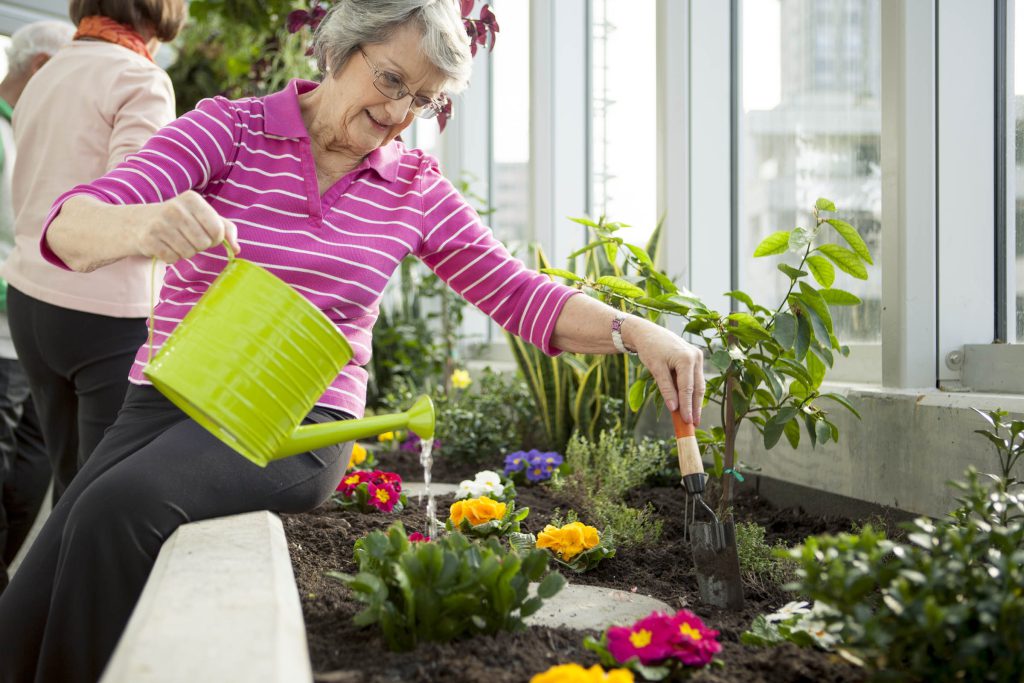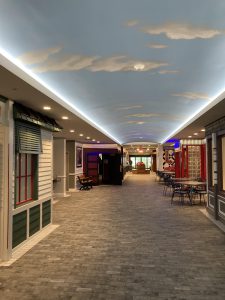
The notion of incorporating the natural environment into design has become increasingly important in contemporary architecture as we begin to appreciate the benefits of establishing a connection between people and nature. When designing buildings, architects must consider how sunlight, air, water, plants, and images of nature can be implemented into building plans. The use of biophilic design is particularly relevant in Senior Housing design as residents may not have as many opportunities to participate in outdoor activities as they once did, making bringing elements of nature to the building design particularly significant.
One of the main principals of biophilic design is the use of natural light. A design team must first consider the orientation of a building before beginning the actual design plans to determine how much southern exposure can be incorporated into the plan. The size and placement of windows is critical to making spaces feel light and airy, and the inclusion of skylights can add natural light to interior spaces. The significance of natural light cannot be overstated as sunlight provides numerous health benefits. According to a study published in the Journal of the American Medical Association, Alzheimer’s patients exposed to sunlight showed cognitive improvement and had fewer signs of depression (https://www.alzinfo.org/articles/prevention/how-light-may-help-people-with-alzheimers-disease/). The addition of natural light into Senior Housing design relates to the maintenance of appropriate Circadian rhythms, leading to an improvement in sleep patterns. Natural light has been linked to bone-health, fewer autoimmune diseases, and healthy weight management. Additionally, the mental health benefits of natural light cannot be overlooked: studies have indicated that natural light reduces anxiety and symptoms of depression.


Light within a space is crucial to the well-being of Senior Residents, but the opportunity to have access to outdoor spaces is also imperative. While being outdoors they can connect to nature as they enjoy moments of reflection and respite.




Natural light is a critical part of biophilic design, but air, water, and plants are also essential elements that might be considered in the plan. Wide corridors and high ceilings, along with walls of windows and plenty of glass, allow for an airy atmosphere that reduces feelings of isolation. Water features and plants bring nature indoors; plants in particular have added health benefits, improving air qualities and providing activities when seniors are given a chance to plant and maintain indoor and outdoor gardens. Even images of the outdoors can lift the spirits of Senior Residents and add a connection to nature.




There are many challenges for seniors as they experience the physical, social, and emotional changes that can accompany the aging process. It is critical that architects and builders focus not only on creating a safe and pleasant environment for senior residents, but also one that will guarantee them an atmosphere that fosters health and happiness.


